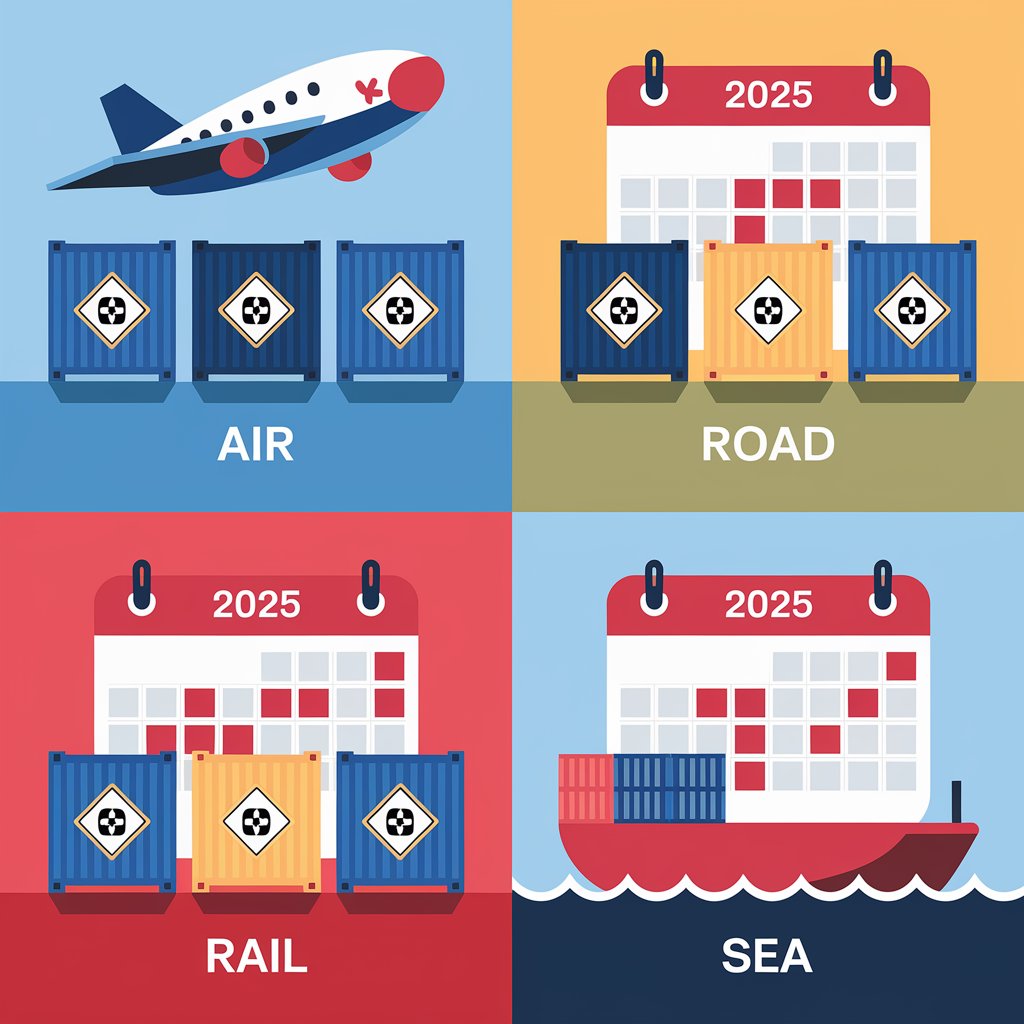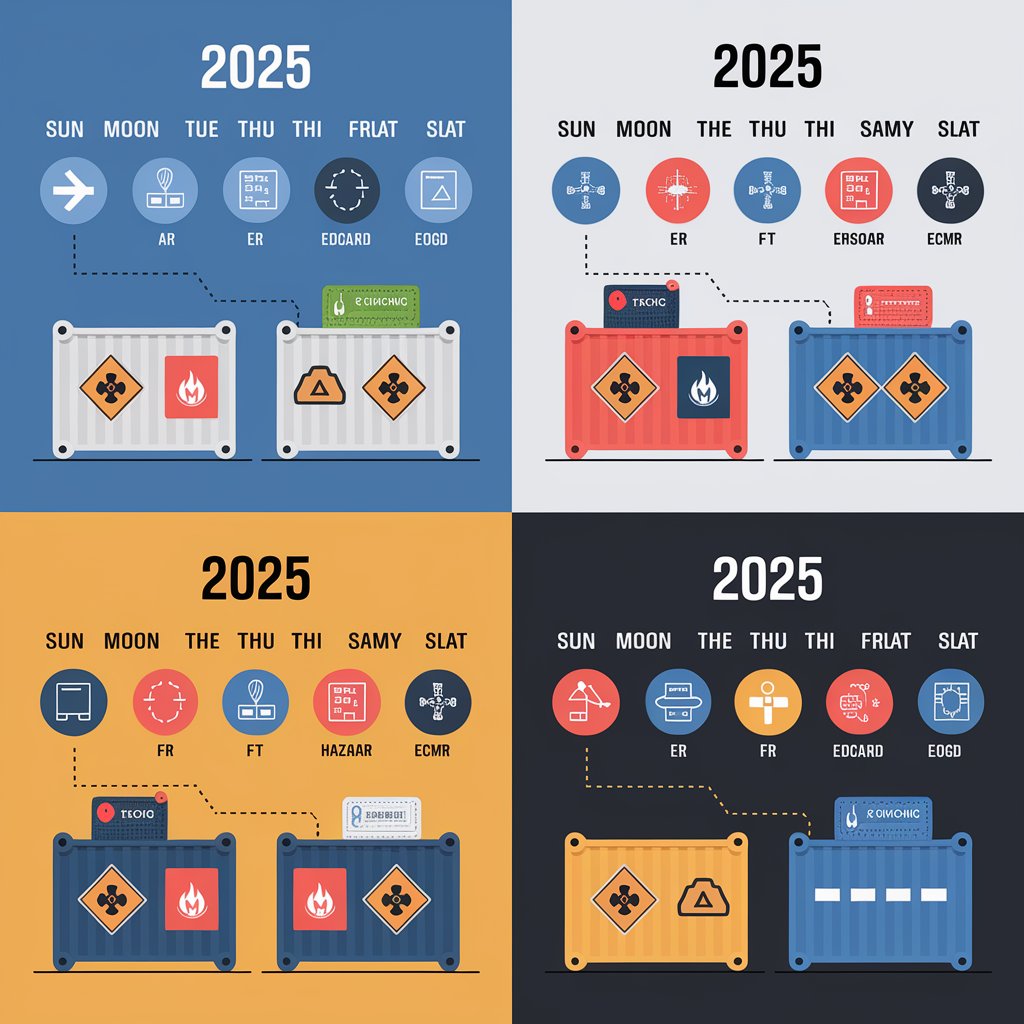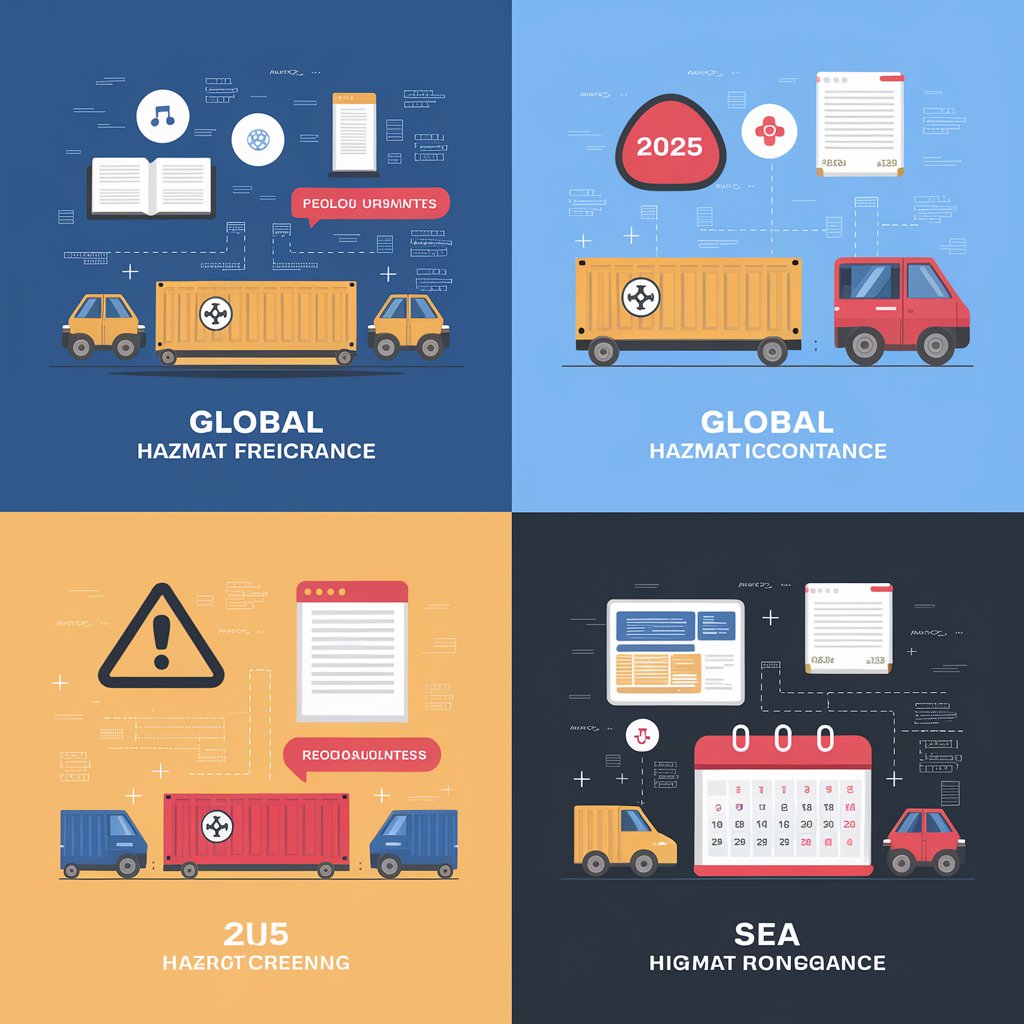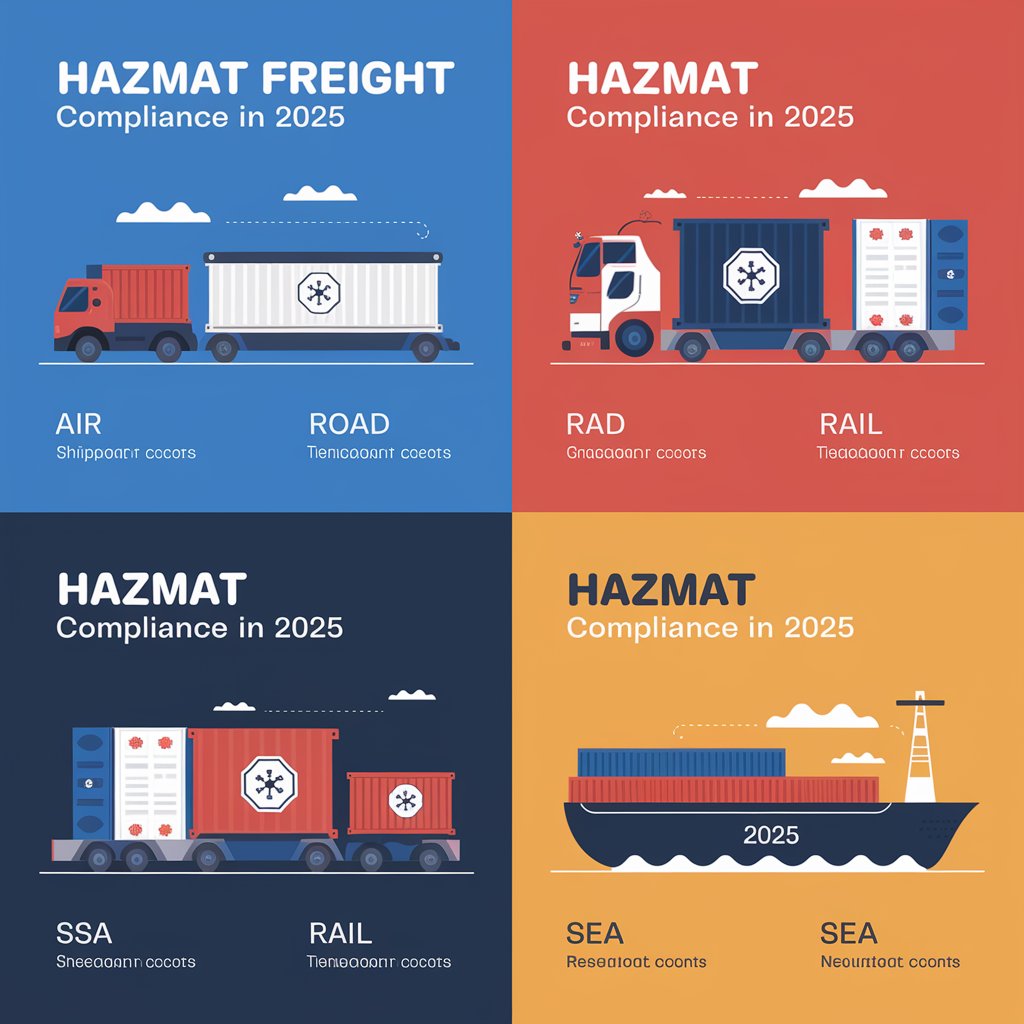Hazmat / DG Regulatory Round-Up
Whether you ship lithium batteries by air or corrosive materials by road, staying compliant means understanding what’s changing and when.
🎯 This round-up highlights the key hazmat freight regulations in 2025, with links to official notices, summaries by mode, and a direct path to training.
💡 Join our DG compliance webinar to stay ahead.

✈️ AIR: ICAO/IATA 66th Edition Changes
Effective Date: January 1, 2025
Authority: ICAO Technical Instructions + IATA DGR
Key Updates:
- 🔋 New lithium battery packaging instructions (PI 965-970 revised)
- 🧪 Clarification on Excepted Quantities and UN numbers
- ✈️ Prohibition of certain reactive chemicals on passenger aircraft
- 📄 Mandatory digital DGD (Shipper’s Declaration) pilot expansion
📘 Refer to: IATA DGR 66th Edition Preview
🚛 ROAD: ADR 2025 Amendments
Authority: United Nations Economic Commission for Europe (UNECE)
Highlights:
- 📦 Adjusted classification for polymerizing substances
- 🧯 Updated fireproofing test requirements for tankers
- 🛑 New marking requirements for mixed loads
- 🧾 Greater emphasis on electronic transport documents (e-CMR)
🔍 ADR 2025 applies to most European cross-border ground shipments.
🚂 RAIL: RID 2025 Adjustments
Authority: OTIF RID Committee
Key Changes:
- 🧪 Alignment of rail carriage rules with updated UN Model Regulations
- 🧱 Enhanced construction specs for pressurized railcars
- 📊 Revised quantity thresholds for toxic gases
- 🧭 Real-time GPS tracking now recommended for Class 2 gases
📌 Often mirrors ADR but with unique provisions for rail-specific risk.
🚢 SEA: IMDG Code Amendment 42-24 (Mandatory 2025)
Authority: IMO – International Maritime Organization
What’s New:
- ⛴️ Mandatory from January 1, 2025 (though adopted in 2024)
- ⚠️ Class 4 and 5 materials labeling clarified
- 📲 Expanded support for digital stowage plans
- 📚 Updated rules for limited quantities in break-bulk shipping
💬 Expect greater harmonization with air/road modal rules in this cycle.

🌍 Multimodal Impact: UN Model Regulations Rev. 23
Every two years, the UN issues a revised “Orange Book”, which all modal codes pull from. The 2025 editions of ADR, RID, IMDG, and IATA are all based on the 23rd edition of these Model Regulations.
🔄 Expect further updates in placarding, classification, and digital declarations across modes.

Compliance Actions: What Forwarders Must Do
- Update SOPs to reflect new classification tables and packaging codes
- Train staff using the latest modal regulations
- Switch to digital documentation where accepted (eDGD, eCMR)
- Check carrier policies – some adopt stricter-than-mandated rules
- Prepare for inspections under the revised 2025 criteria
🎯 Being proactive = avoiding costly delays or fines.

🏁 Conclusion: 2025 Is a Compliance Turning Point
The year 2025 marks a major shift in hazmat freight handling, especially as global regulators push for harmonized digital documentation, updated labels, and better safety protocols.
Whether you operate by land, sea, or air — or manage multimodal shipments — you can’t afford to wait.
✅ Join DG webinar
Get the full breakdown of the 2025 hazmat freight regulations, with Q&A, visual guides, and live demos.
🎥 Seats limited. Registration required.
